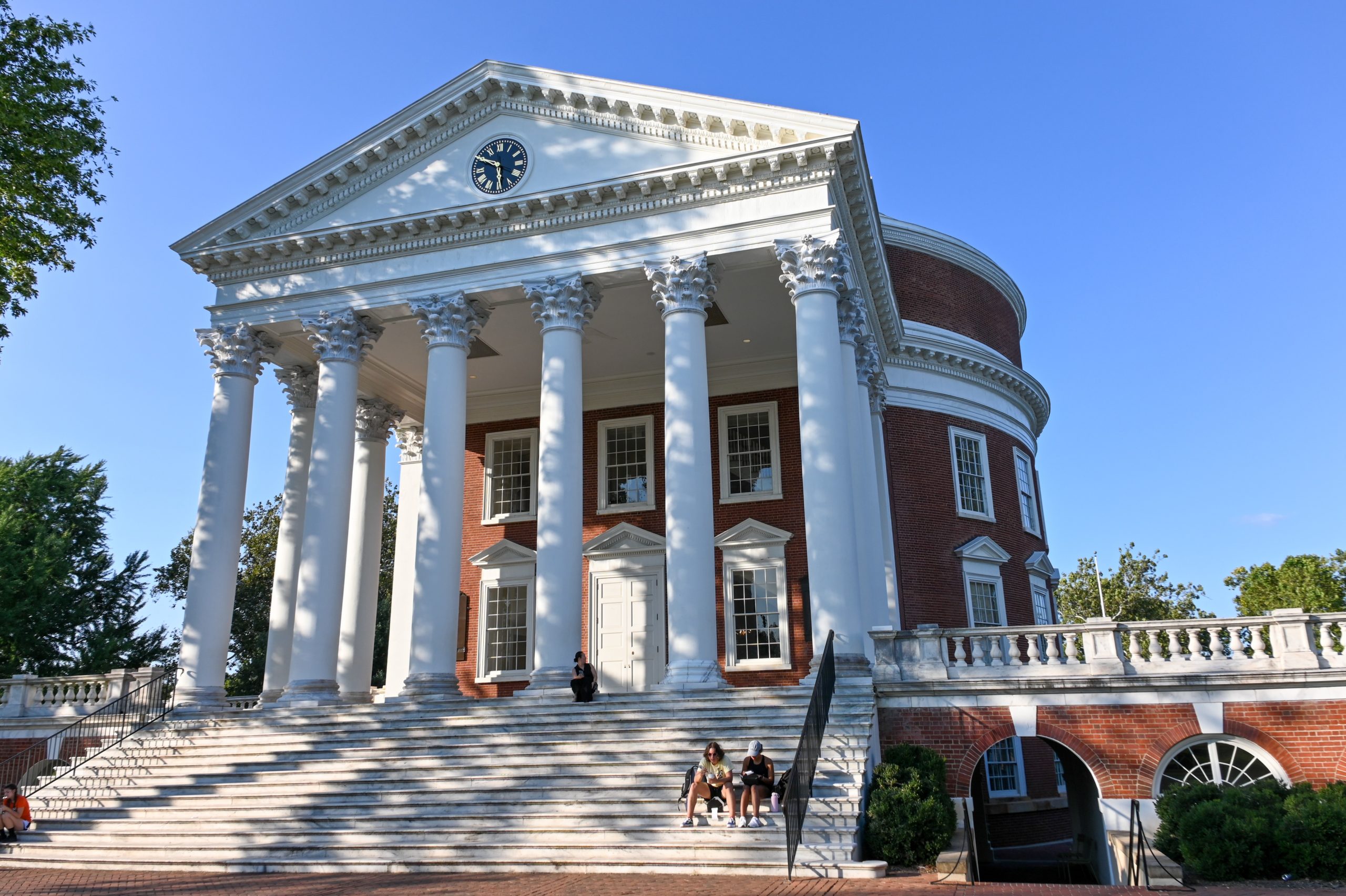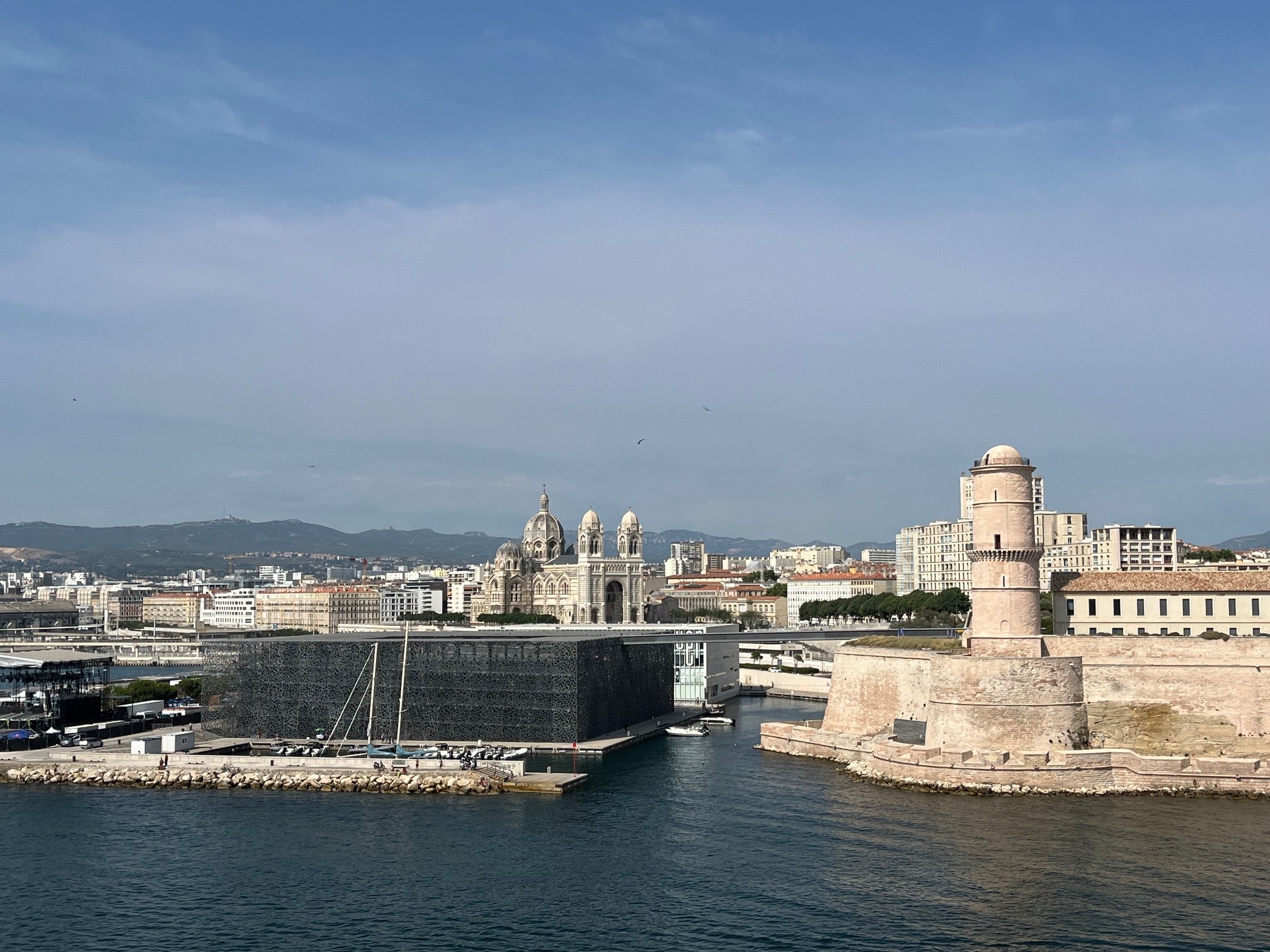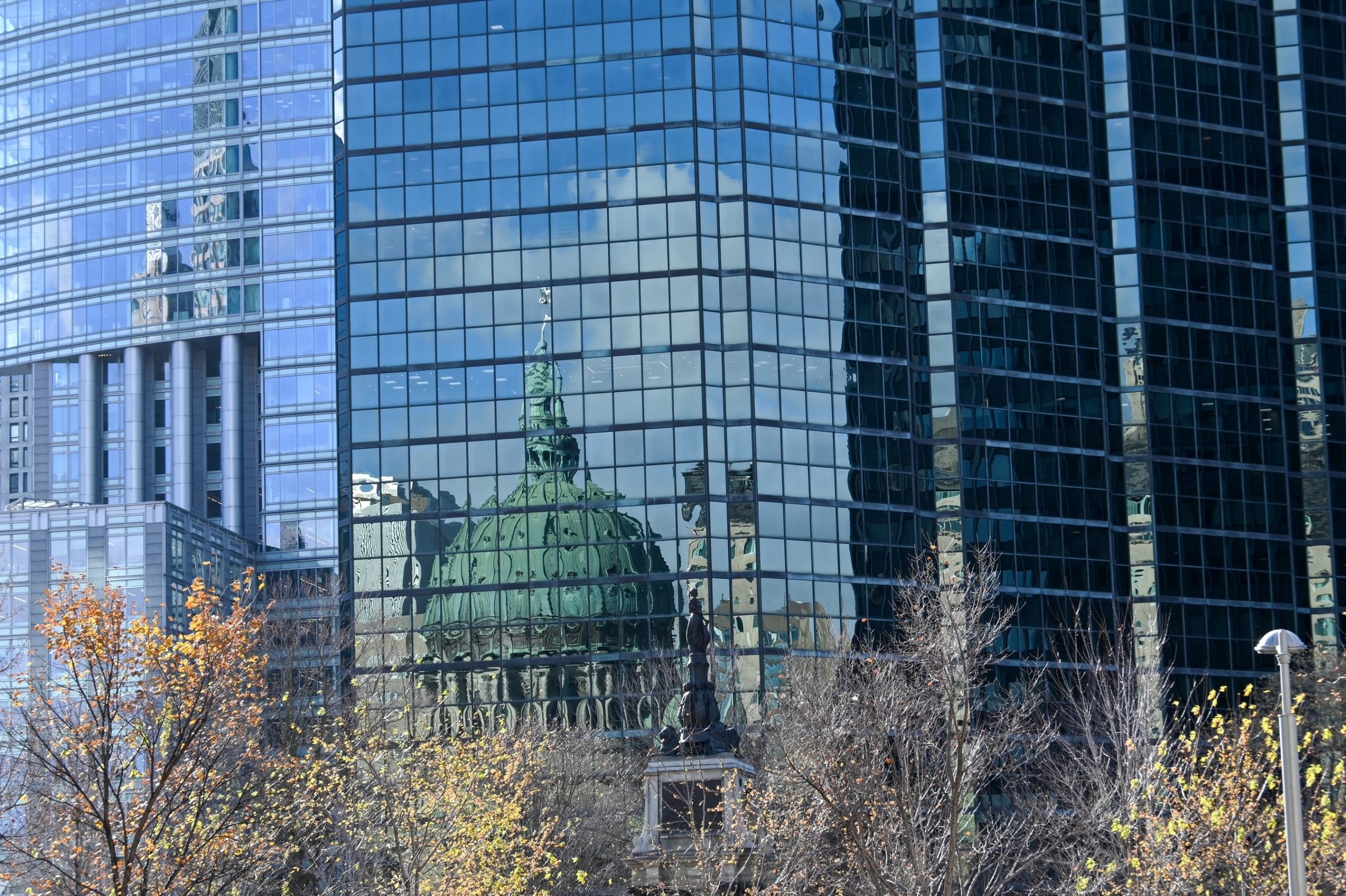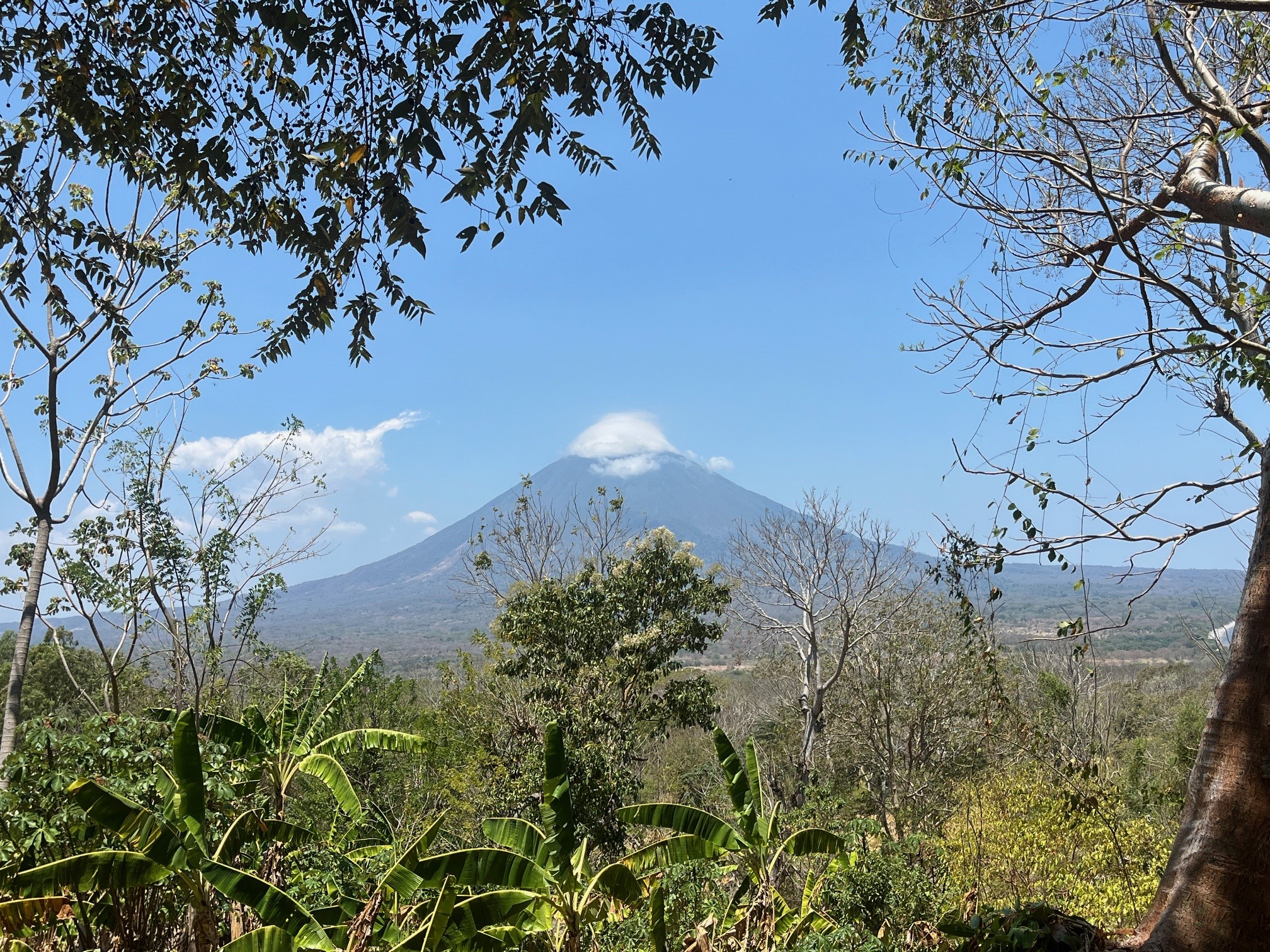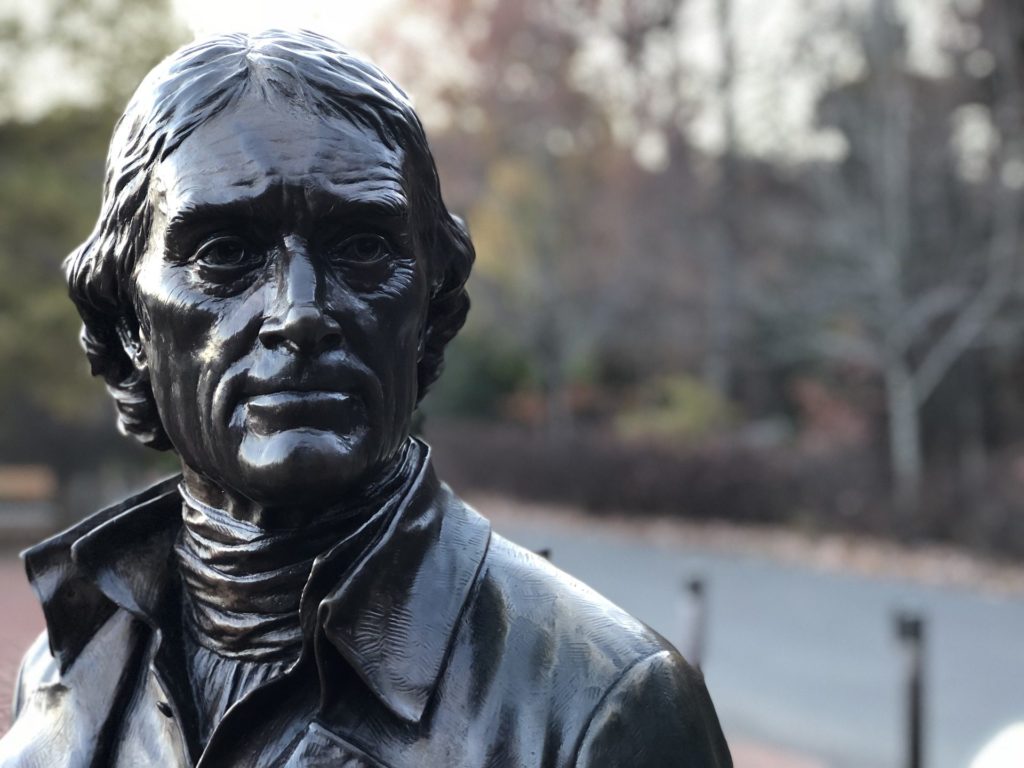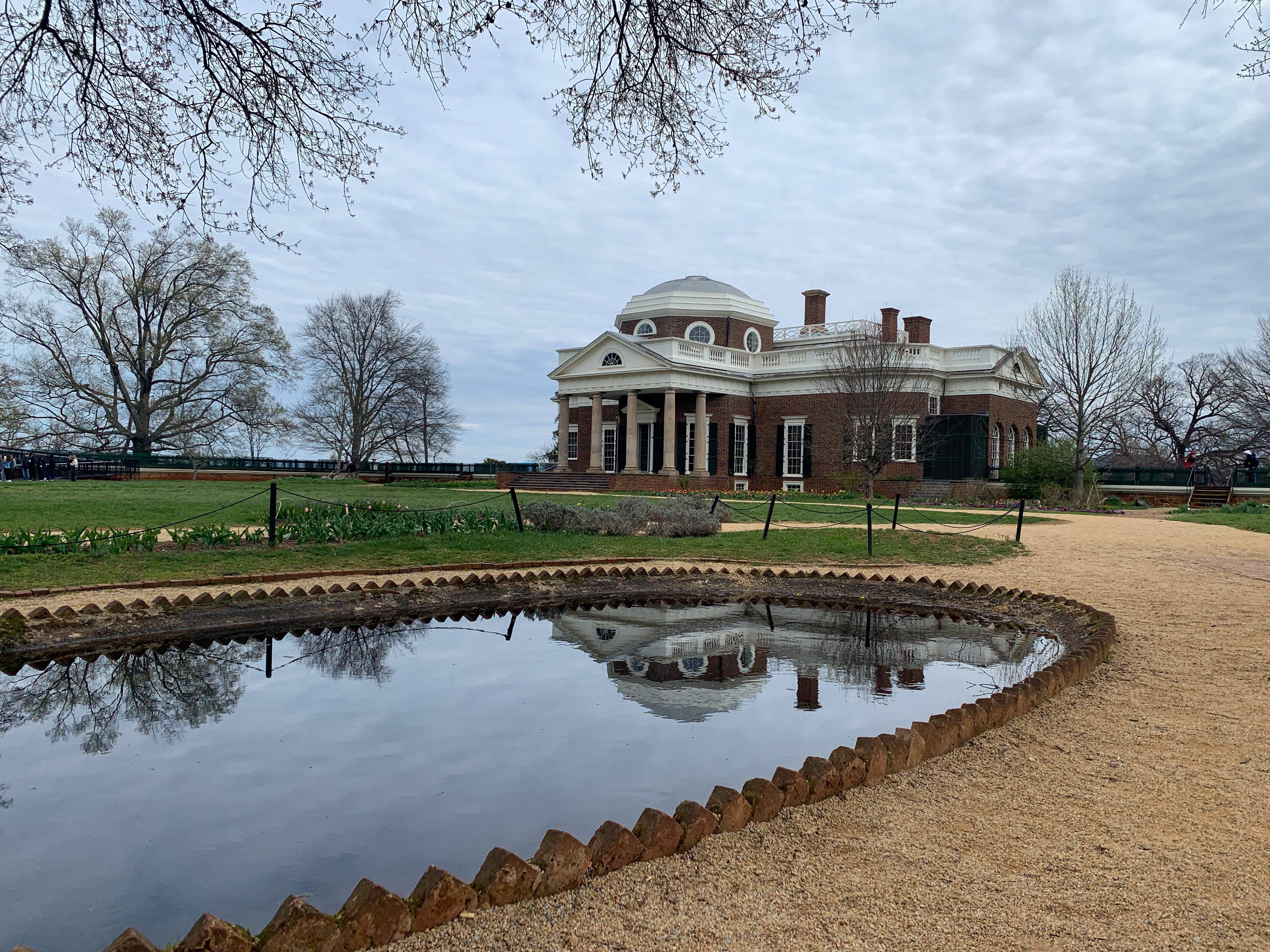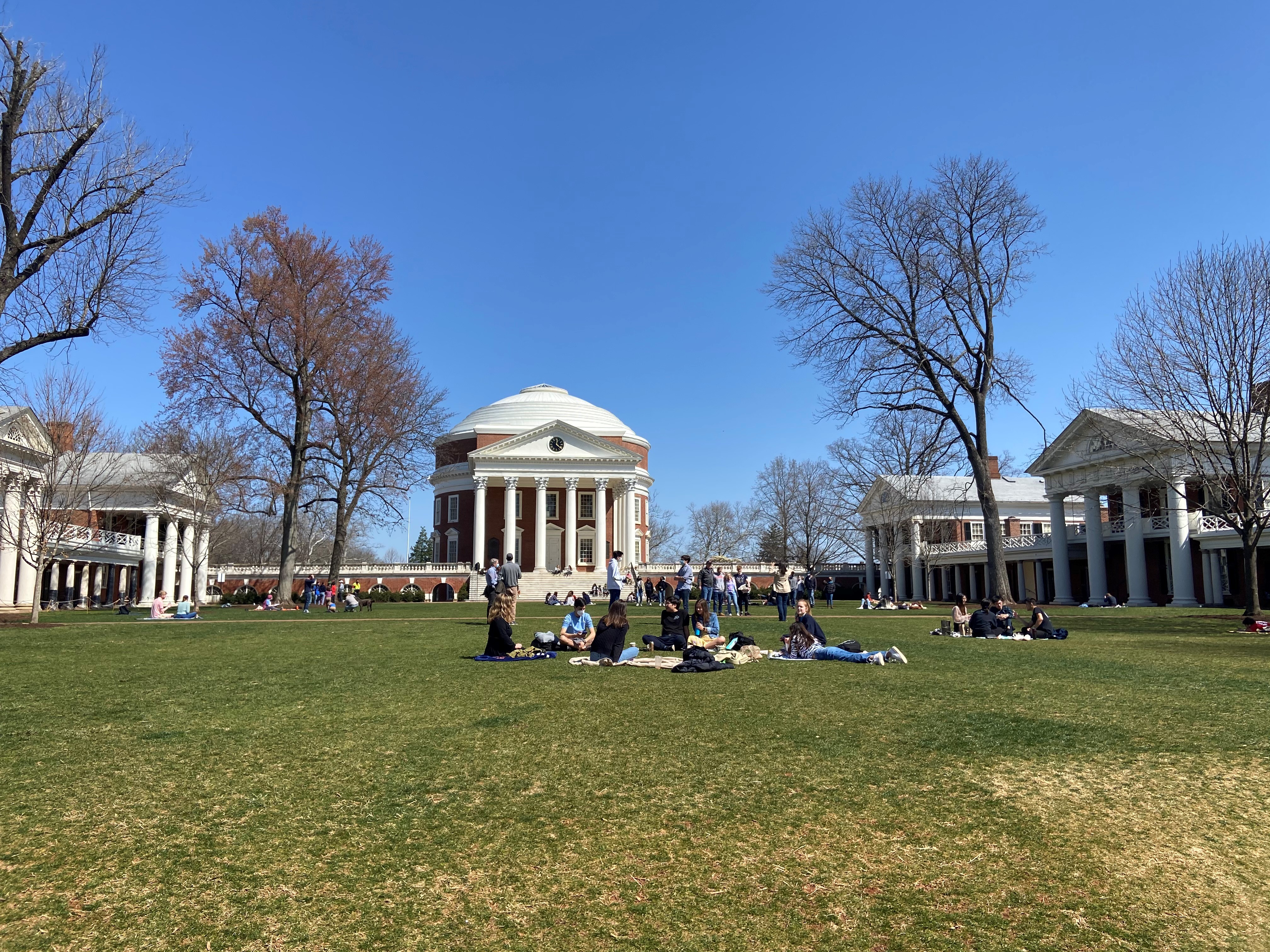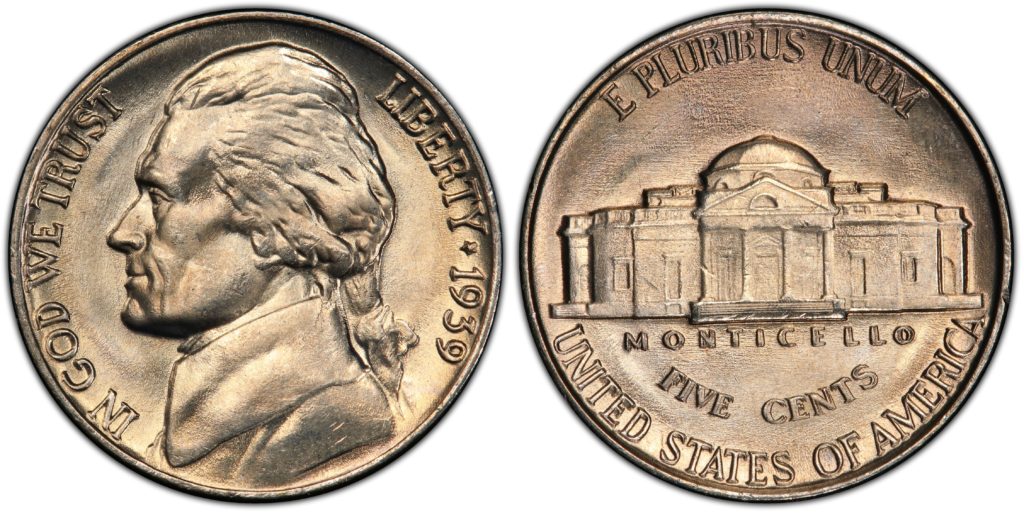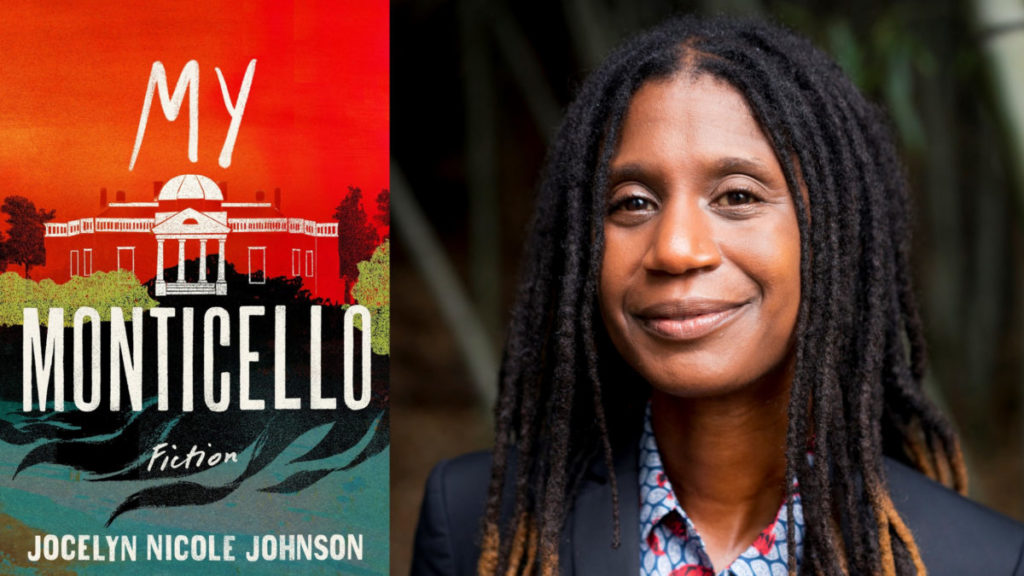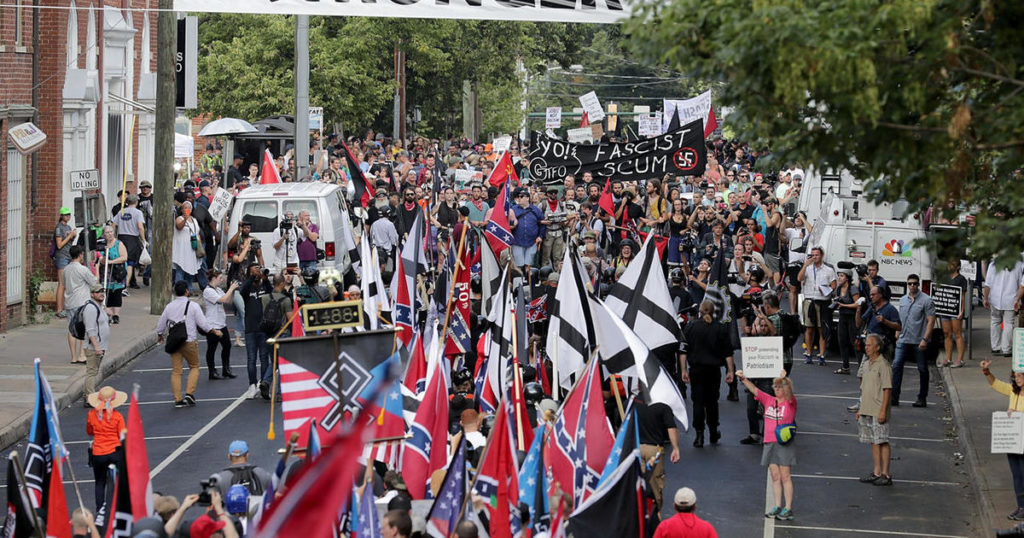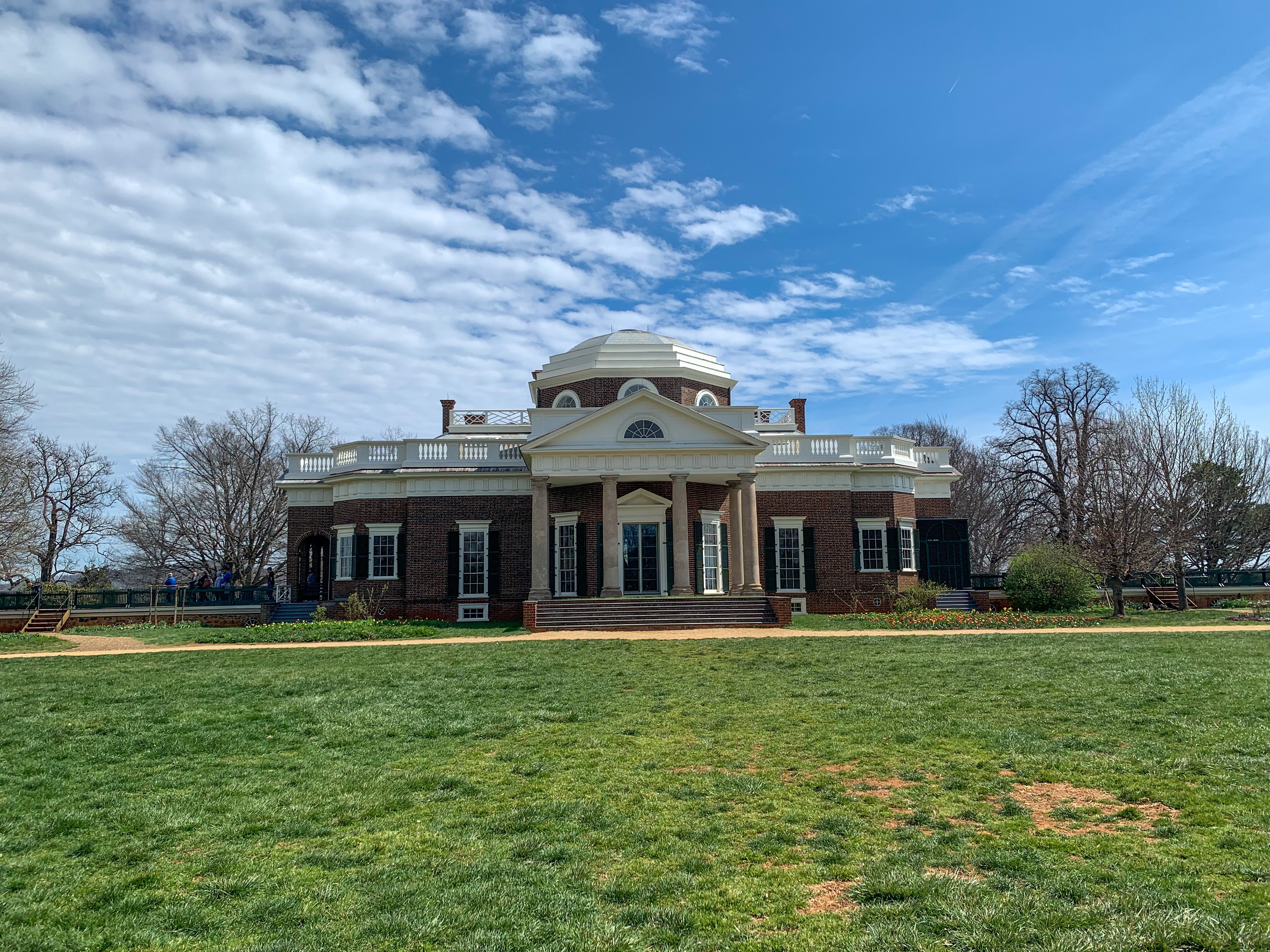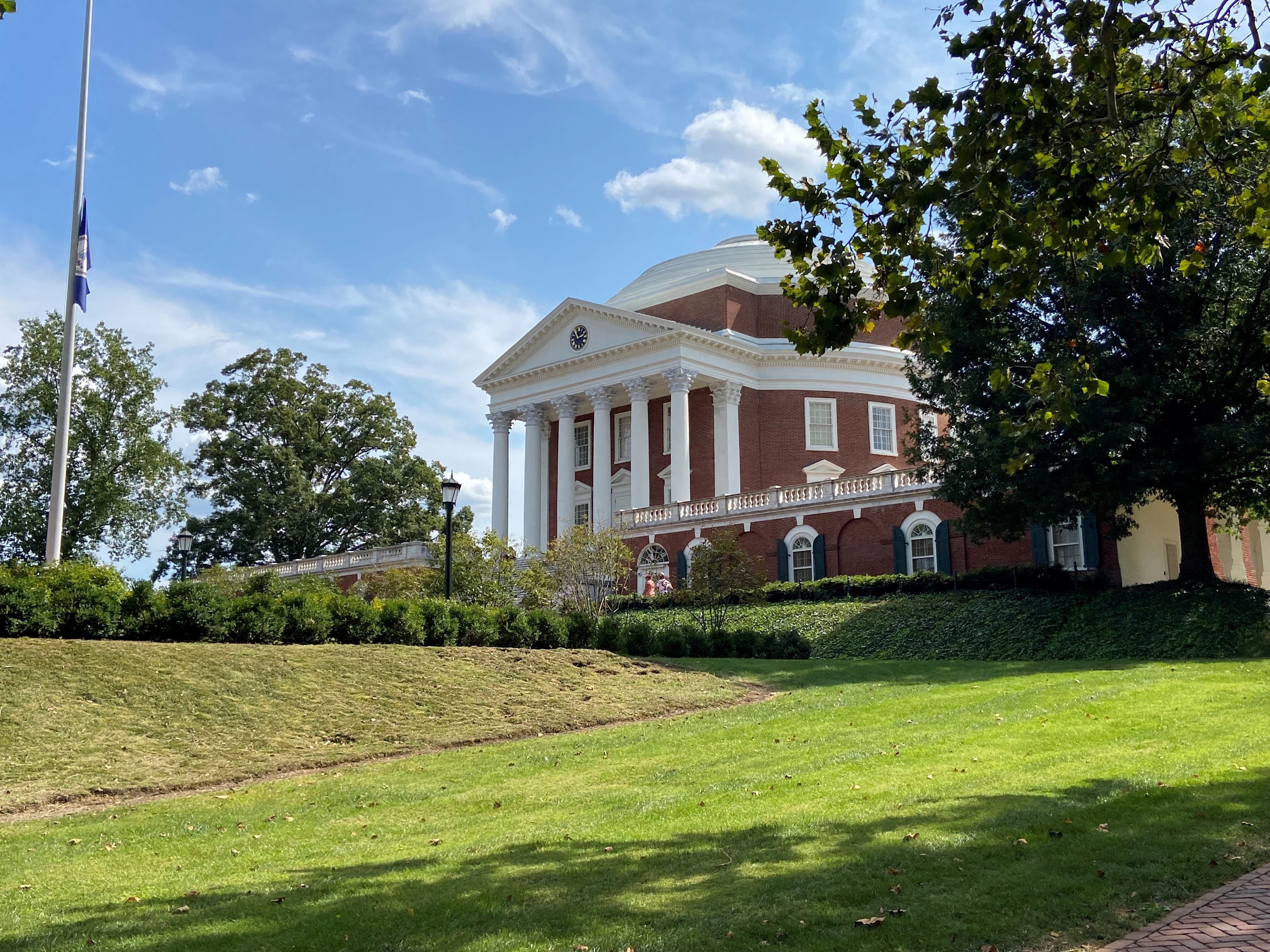“We hold these truths to be self-evident, that all men are created equal, that they are endowed by their Creator with certain unalienable Rights, that among these are Life, Liberty and the pursuit of Happiness.
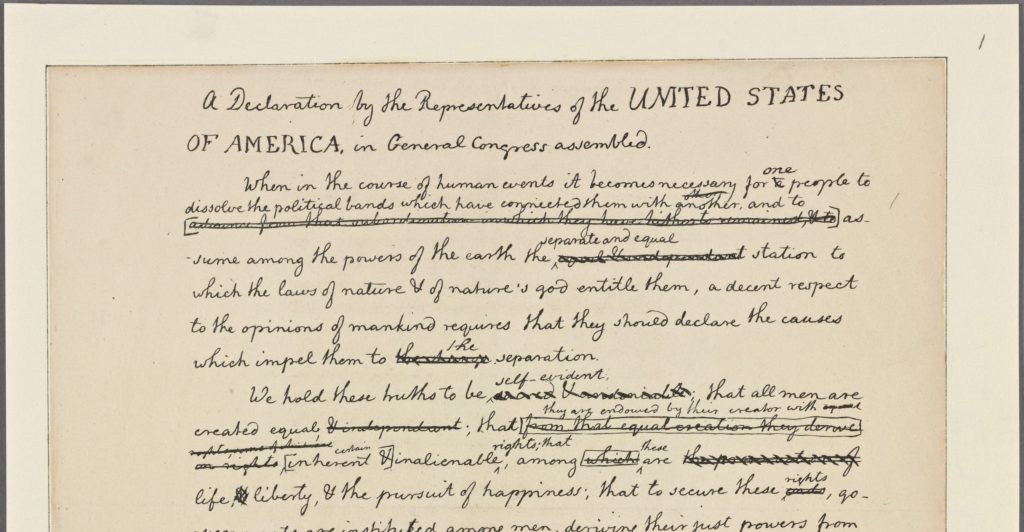
So begins the preamble to the U.S. Declaration of Independence. This paragraph is one of the most famous texts in the United States. Students learn it in school and politicians like to quote it.
The main author of this Declaration of Independence is Thomas Jefferson. In 1776, he was a 33-year-old lawyer from Virginia. After serving as the young Republic’s ambassador to Paris, he became the third president of the United States from 1801 to 1809. At the end of his second term, he retired to his plantation at Monticello, an elegant mansion built on a hill overlooking the town of Charlottesville. In his retirement years, he devoted himself to the founding of the University of Virginia and participated in the plans for the construction of this “academic village”. This marvel of classical harmony mixing orange bricks and white pediments is one of the most accomplished architectural masterpieces in America. Coupled with Monticello, the campus is a UNESCO World Heritage Site.
Charlottesville is located two hours south of where we live. It is therefore often and with great pleasure that we go there, especially since our daughter started studying there two years ago, at the University founded by Thomas Jefferson.
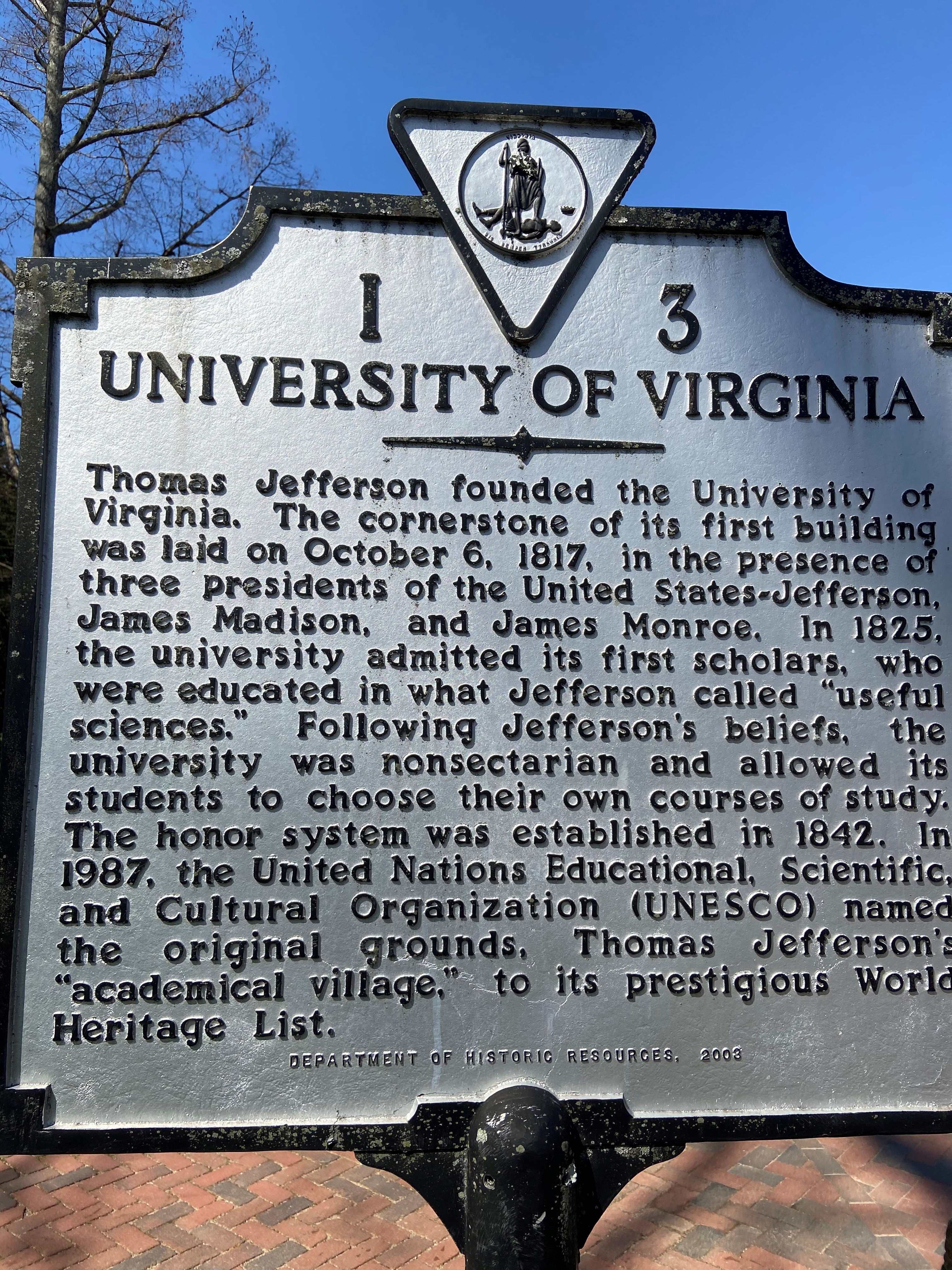
He is recognized as one of the best presidents in American history. His portrait adorns the (rare) two-dollar bills, a beautiful Monument is dedicated to him around the Tidal Basin in Washington, and Monticello adorns the American five-cent coins.
And yet, the man who wrote that “All men are created equal” owned several hundred slaves to support his plantation. It was also slaves who built the superb university whose plans he signed. And finally, DNA tests showed a few years ago that he had children with one of his slaves, Sally Hemings, who accompanied him to Paris after the death of his wife Martha. Sally and her children were not emancipated until after the death of the author of the Declaration of Independence.
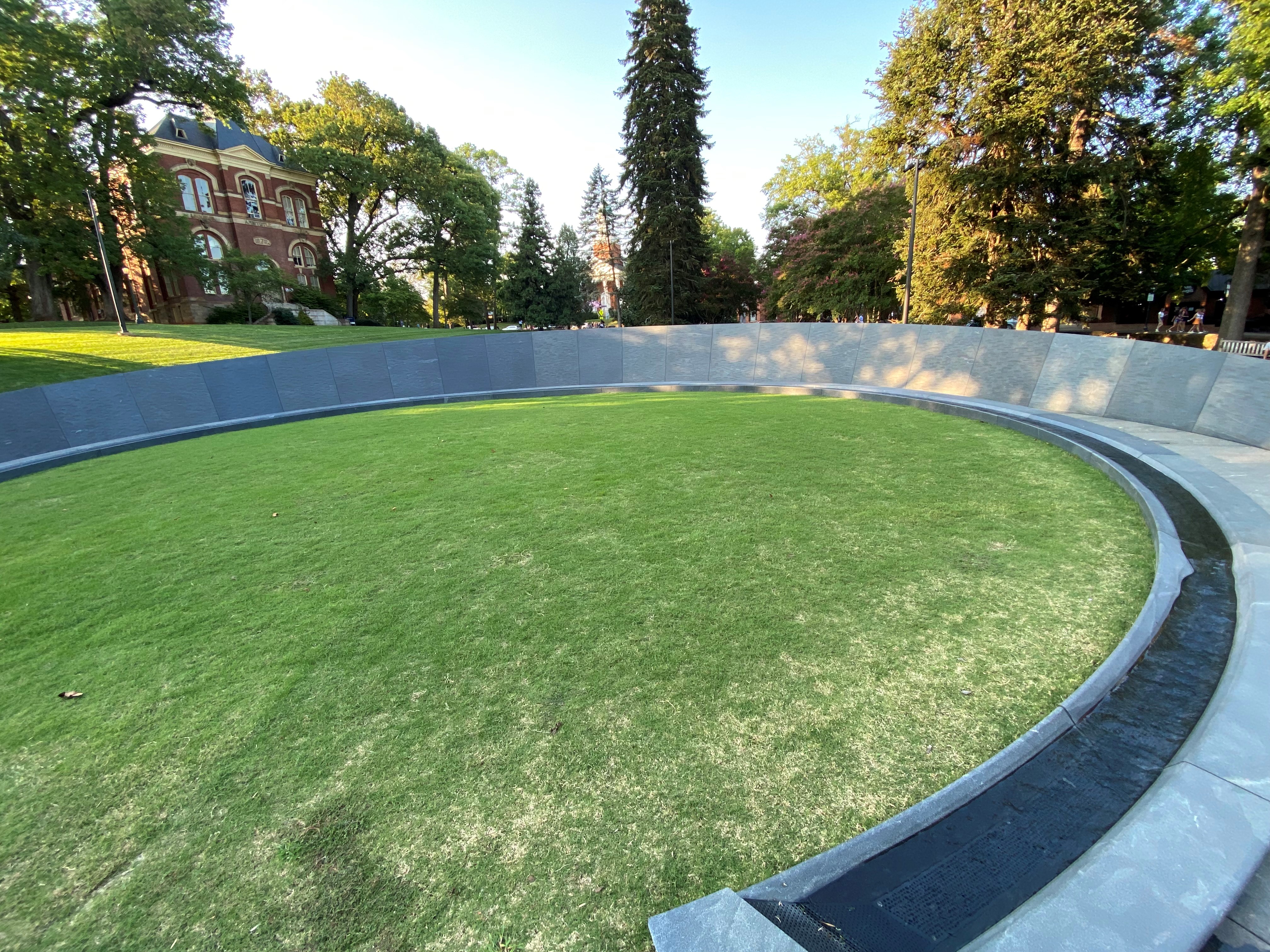
In her novella “My Monticello,” which gives the short stories collection its title, Jocelyn Nicole Johnson portrays Da’Naisha Hemings Love, a young black student at the University of Virginia. Her grandmother, Ma Violet, has always told her that her middle name indicates that she is one of the descendants of Jefferson’s union with his slave.
But, the author, who is a teacher in Charlottesville, does not take us to revisit Jefferson’s past, at least not directly. It is in the near future that the story takes place, a somewhat dystopian future that nonetheless closely resembles the events of the summer of 2017 when a far-right nationalist march in Charlottesville degenerated and a counter-protester was killed in the violence that followed.
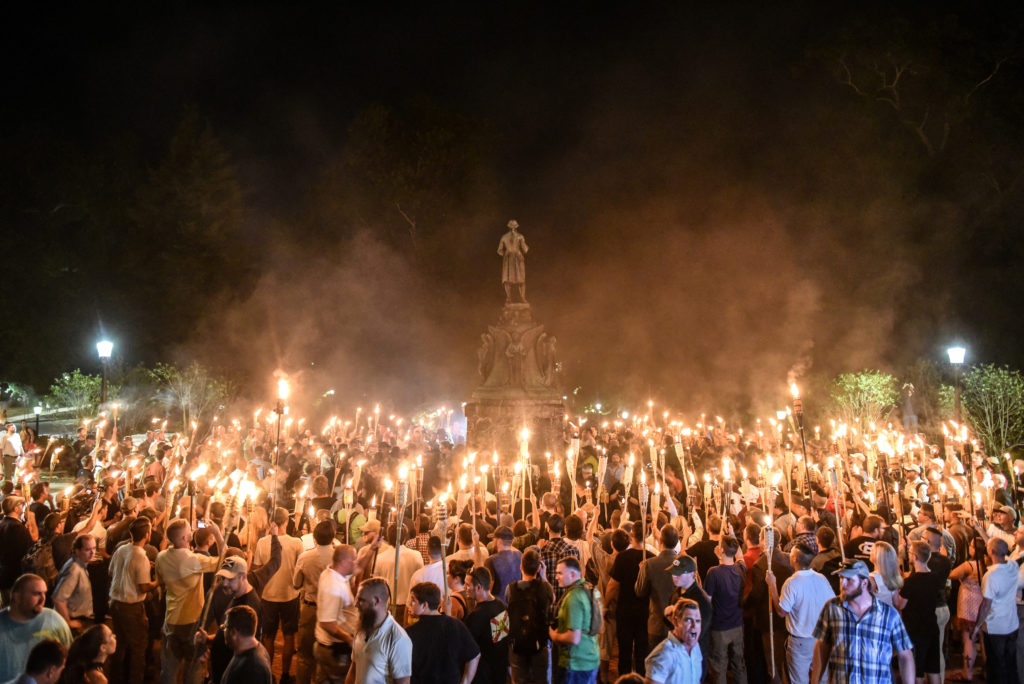
Following a natural disaster, the Charlottesville area is without power and utilities. Armed groups are driving around in pickup trucks affirming white supremacy. They spread terror and burn down a black neighborhood in the city.
Da’Naisha flees with her grandmother Ma Violet, and her white boyfriend Knox. They end up in Monticello where Da’Naisha had once worked as a guide. Little by little, they are joined by others and form a heterogeneous and multiracial group that organizes its survival around Thomas Jefferson’s plantation that tourists no longer visit. One night, Da’Naisha and Knox enter the house and rediscover its secrets. They find a room for Ma Violet, whose health is declining.
Part of the group attempts an expedition to Charlottesville to see how things are going and what is left of their homes. Da’Naisha hopes to take advantage of the opportunity to recover her grandmother’s medicine that was left there. Knox, always very attentive, accompanies her, while Devin, a former black boyfriend, also comes along.
But the outing turns out to be short, the roads are blocked, and the group has to retreat to Monticello where Ma Violet is dying. This short, well-written novella ends as the group prepares to face an assault from those below. The outcome of the battle is uncertain, resistance may be futile, but the ideals of Monticello and its former inhabitants, illustrious and enslaved, white and black, will have thrown all their strength into the battle.
